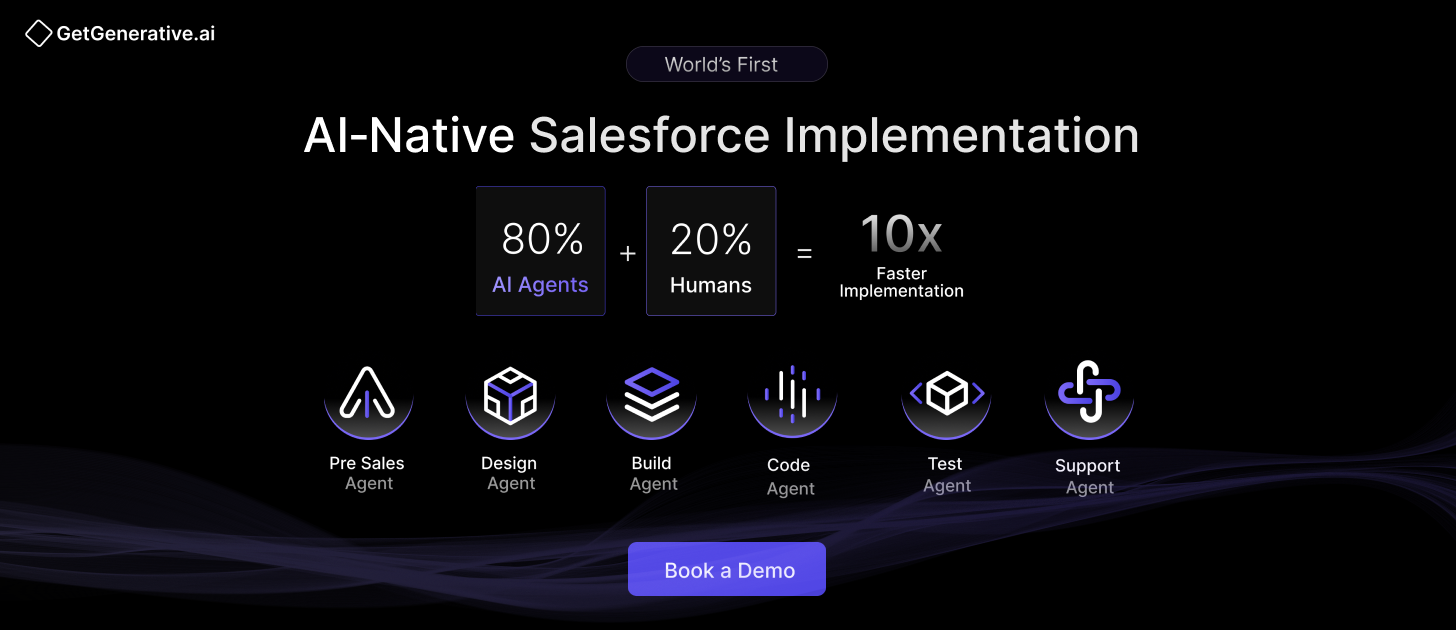Agentforce 3: How Salesforce Is Revolutionizing AI Agent Integration in 2025
In 2025, Salesforce is redefining what AI-powered enterprise platforms can be—with the release of Agentforce 3, its most sophisticated agent-based system yet. This isn’t just another AI update. It’s a complete architectural leap, one that promises to unify AI agents, automate business processes, and enable intelligent collaboration across every Salesforce Cloud. For enterprises struggling with disjointed tools, redundant automations, or inconsistent data flows, Agentforce 3 delivers a coordinated, AI-native solution.
Gartner projects that by 2026, 60% of enterprise applications will include embedded AI agents, up from less than 5% in 2023. Salesforce is at the forefront of that trend, building Agentforce 3 to help customers go beyond basic AI chatbots—and fully embrace multi-agent orchestration, autonomous workflows, and industry-specific copilots that actually understand their work.
Let’s explore what makes Agentforce 3 such a transformative leap for Salesforce users in 2025.
Agentforce: From Embedded AI to Enterprise Orchestration
Salesforce introduced its original AI agent framework under the Agentforce brand in 2023. At the time, it focused primarily on integrating AI into specific Salesforce apps—such as Sales Cloud or Service Cloud—by surfacing task-oriented copilots or embedding Einstein GPT capabilities.
Agentforce 2.0 (2024) expanded that vision with modular agents and deeper Data Cloud integration. However, it lacked cross-agent orchestration and struggled with making real-time decisions across departments or systems.
Agentforce 3 addresses these limitations head-on. It introduces a cross-cloud AI agent architecture, a central Command Center, support for open agent interoperability via the Multi-Agent Collaboration Protocol (MCP), and access to industry-specific prebuilt actions for faster time-to-value.
Introducing the Agentforce Command Center
At the heart of Agentforce 3 is the Command Center, a centralized console for managing, monitoring, and customizing AI agents across the Salesforce ecosystem.
Key features include:
- Agent Inventory Management: View, activate, and control all agents deployed across Sales, Service, Marketing, Commerce, and more.
- Orchestration Rules: Define how agents collaborate or hand off tasks across business domains (e.g., Sales agent → Quote agent → CPQ agent).
- Performance Monitoring: Analyze agent effectiveness, error rates, user interactions, and contribution to KPIs using real-time dashboards.
- Prompt Chain Configuration: Build and customize prompt chains that allow agents to complete multi-step workflows autonomously.
Example: A financial services firm uses Command Center to route a mortgage request through five agents—Discovery, Document Review, Credit Risk, Compliance, and Offer Generation—automatically, with no human handoff required.
This Command Center isn’t just a monitoring dashboard. It’s the strategic control hub of an enterprise’s AI workforce.
Related Read – Salesforce Launches Agentforce 3 With Real-Time Visibility and MCP Integration
Interoperability with the Multi-Agent Collaboration Protocol (MCP)
To ensure extensibility and compatibility with third-party AI tools, Salesforce has adopted the Multi-Agent Collaboration Protocol (MCP)—an open standard pioneered by the OpenAgents community.
With MCP, Agentforce 3 can now interact with agents from outside the Salesforce ecosystem, including:
- Internal AI copilots built on platforms like OpenAI or Hugging Face
- External automation tools like UiPath or Workato
- Agent-based SaaS solutions like GetGenerative.ai, which already supports native MCP handoffs
This opens the door to multi-vendor AI ecosystems, where Agentforce agents don’t need to “own” every task—they simply coordinate the outcome.
Industry-Specific Agents and Prebuilt Actions
Salesforce isn’t taking a one-size-fits-all approach. With Agentforce 3, it now offers industry-specific agent bundles—each equipped with prebuilt actions, AI-tuned workflows, and domain-specific models.
Examples include:
- Healthcare: Patient Intake Agent, Prior Authorization Agent, Claims AI Agent
- Financial Services: Know Your Customer (KYC) Agent, Compliance Copilot, Wealth Profile Generator
- Retail & Consumer Goods: Store Ops Agent, Returns Automation Agent, Promotion Optimizer
- Manufacturing: Order-to-Cash Agent, Procurement Agent, Asset Monitoring Bot
Each of these agents is trained on structured industry data models, ensuring context-aware execution and regulatory alignment.
The Atlas AI Architecture
Agentforce 3 is powered by Atlas, Salesforce’s new AI orchestration framework that brings coherence to agent behavior across disparate clouds and data sources.
Core capabilities of Atlas include:
- Multi-Agent Planning Engine: Coordinates task execution among different agents with memory of previous actions and expected outcomes.
- Cross-Cloud Knowledge Graphs: Leverages real-time customer, product, and transaction data from Salesforce Data Cloud to contextualize agent responses.
- Auto-RAG (Retrieval-Augmented Generation): Enhances prompts with accurate, up-to-date enterprise content such as product catalogs, SLAs, or compliance rules.
This architecture allows Salesforce AI agents to move from reactive helpers to context-aware decision-makers.
Deeper Integration with Flow Orchestration and Data Cloud
Agentforce 3 doesn’t just work on Salesforce—it works with it, deeply embedding into the two most critical automation layers:
1. Salesforce Flow Orchestration
Agents can now:
- Be invoked as Flow steps in process builders
- Trigger follow-up automations based on event conditions
- Collaborate in long-running workflows, such as loan underwriting or partner onboarding
2. Salesforce Data Cloud
With real-time access to:
- 360° customer profiles
- Streaming event data
- Segmentation and behavioral insights
Agents are not guessing—they’re acting on live, unified data.
Also Read – Why AI Struggles with Legacy Salesforce Orgs (And What You Can Do About It)
Strategic Recommendations for Enterprise Adoption
✅ 1. Appoint an AI Governance Lead
AI agents must be governed like any digital workforce. Appoint a stakeholder to own agent inventory, permissions, training data, and oversight.
✅ 2. Start with Industry Agent Bundles
Don’t reinvent the wheel. Begin with pre-configured agent bundles tuned for your vertical, then layer custom logic on top via Command Center.
✅ 3. Integrate with Existing RAG Sources
Whether it’s SharePoint, Confluence, or GetGenerative.ai, plug in your enterprise knowledge bases for richer, contextual prompt completion.
✅ 4. Monitor with AI KPIs
Go beyond user clicks. Track Agent ROI, agent error rate, average time to resolution, and workflow handoff success as new north stars.
✅ 5. Pilot Before Scaling
Start with low-risk use cases (e.g., email summarization, quote generation) and gradually expand to complex workflows with high business impact.
Conclusion
With Agentforce 3, Salesforce has created more than an update—it has launched a platform shift. The rise of AI agents in enterprise software will redefine workflows, reduce manual effort, and unlock new levels of autonomy.
At GetGenerative.ai, we’ve reimagined Salesforce implementation—built from the ground up with AI at the core. This isn’t legacy delivery with AI added on. It’s a faster, smarter, AI-native approach powered by our proprietary platform.
👉 Explore our Salesforce AI consulting services




